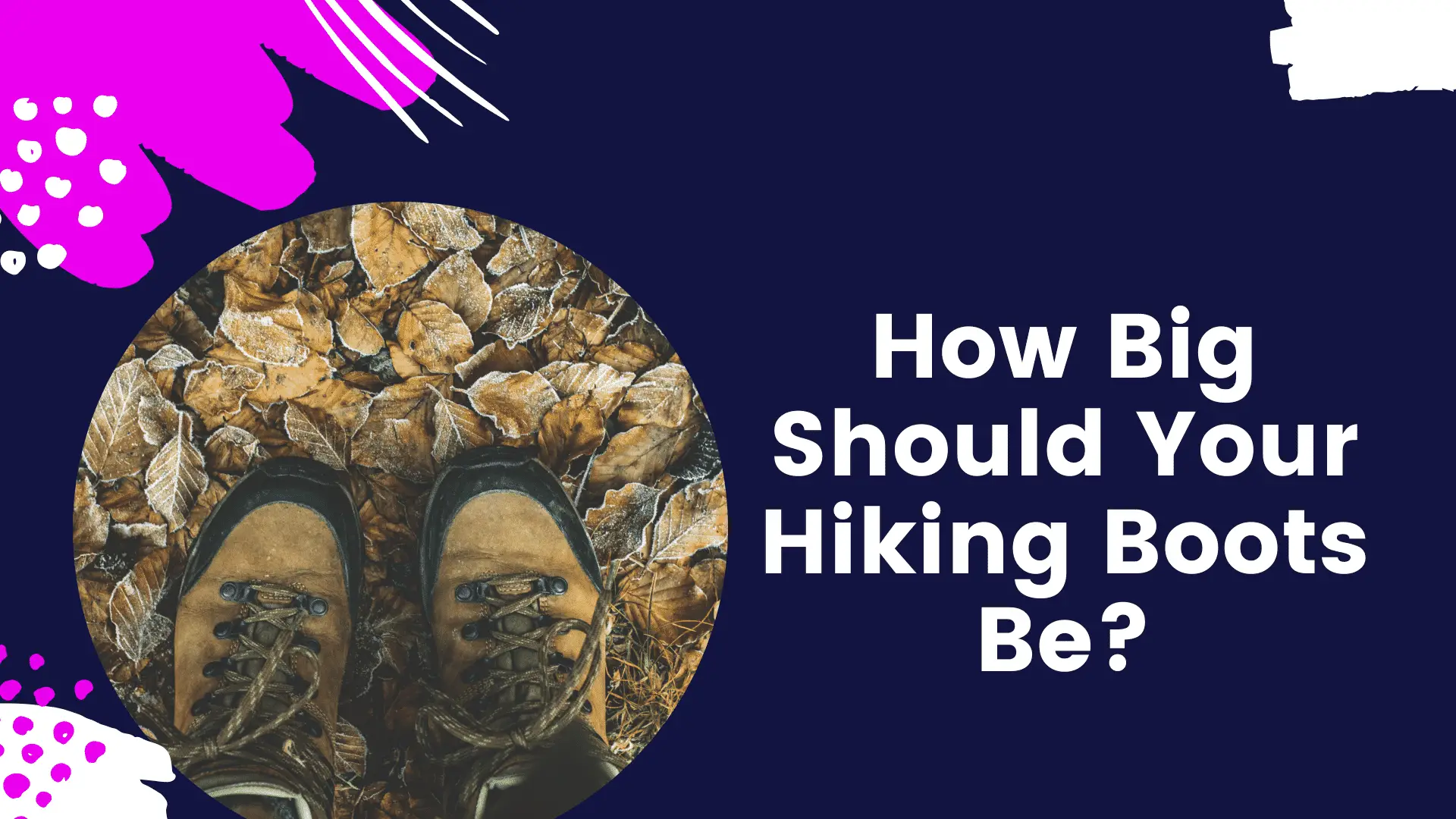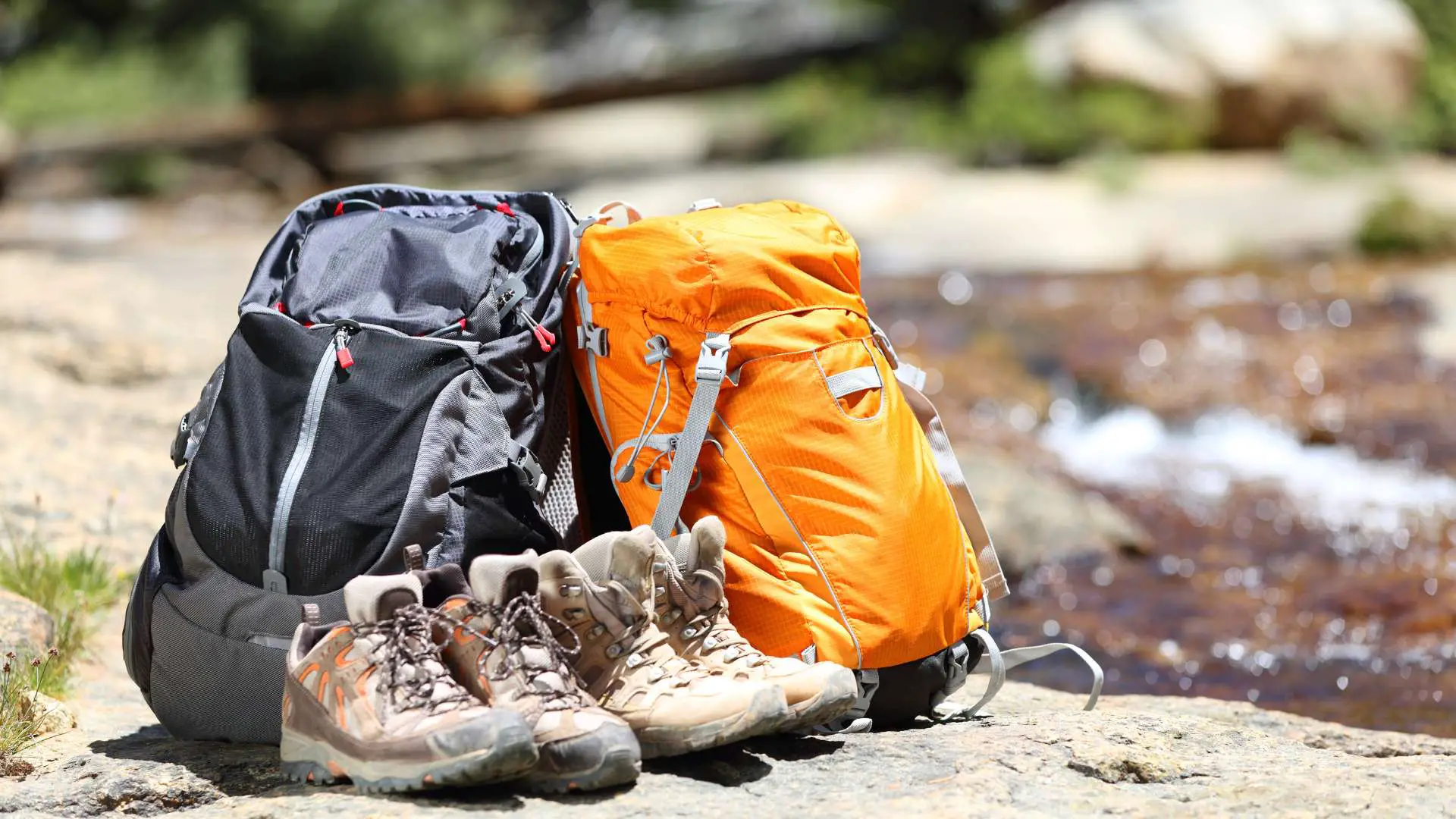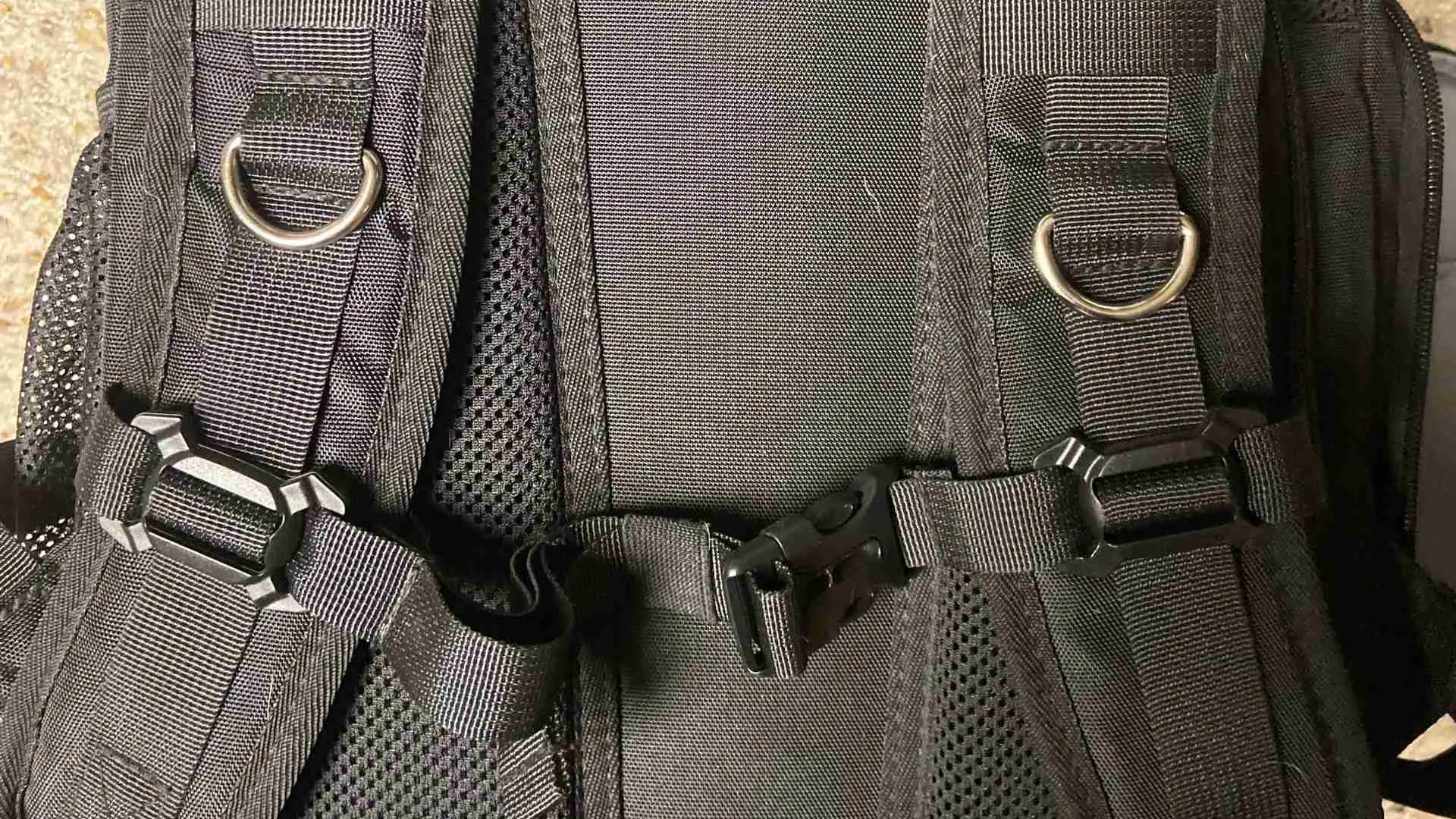A couple times per year I go to the shoe store, try on a few pairs that I like and normally leave with a pair or two. Before I go into the store I know that I wear a size 12 Wide and that’s what I’m gonna get.
After talking to some of my backpacking buddies I realized that a large percentage of the backpacking community buy shoes that are bigger than their standard shoe size. I’ve been hiking for years wearing my normal shoe size without any problems.
How have I never heard of this magical phenomenon that causes everybody’s feet to grow one-half size larger? Have I been backpacking all wrong from the start?
Table Of Contents
So How Big Should Your Hiking Boots Be?
You should always buy hiking boots that are the same size as your normal shoe size. The only time you might need to size up is if you’re hiking in the winter and need room for thick sicks(don’t want to cut off circulation).
I’m sure some of you will disagree with my opinion. Feel free to let me know what you think in the comment section below.
Should Hiking Boots Be a Size Bigger?
Throughout the United States, it’s standard practice for backpackers and hikers to buy shoes that are 1/2 size larger than their normal foot size. Have you ever noticed your feet are swollen after a long hike?
Almost everybody has swollen feet after a long day on the trail. Swelling is your bodies way of protecting you from injury. As your feet start to overwork the blood vessels so that more blood will rush in. This increased blood flow will help heal and repair the muscles so you’ll be ready to go in the morning.
You shouldn’t need to increase your shoe sizes. Under most circumstances, the swelling is minimal and won’t cause a need for bigger boots.
Foot Swelling is a Myth(Well Kinda)
The idea that foot swelling after physical activity leads to significant changes in foot size is a myth. I’m not saying that your feet won’t swell after a long hike, they definitely will, but it shouldn’t be a problem.
Normal activity-induced swelling may result in obvious foot swelling, but that’s not that big of a deal. In my opinion it is never a good idea to “size up” your hiking boots for one simple reason.
Regardless of change of volume(how puffy your foot gets), a healthy foot will never grow longer over short periods of time(remember I said “healthy foot”). If you buy shoes that are too large for your feet there’s going to be extra room in the front of your shoe.
All that extra space will actually pull the base of your big toe forward causing serious biomechanical issues. There’s a good chance you end up with hikers toe, blisters, hyper pronation and arch fatigue after a long hike. It’s really gonna cause more harm than good.
You might want to check out my post on preventing hiking blisters.
Sometimes The Foot Does Get Longer(It’s Rare!)
In some rare circumstances, peoples feet have been known to increase in length after strenuous exercise. Unfortunately, this isn’t a result of swelling. My understanding is that some people end up with a collapsed arch after strenuous exercise, and this is what causes increased length.
In a healthy/strong foot this should never be a problem. The only time this happens is when hikers go out unprepared with little to no foot and leg muscle(those muscles support the arch). So if your feet are getting longer after a hike you need to work on strengthening your leg/feet muscles.
How Big Should Hiking Boots Be?
When I was in my early 20’s I woke up every morning and went on a 5 mile run(sometimes farther depending on my mood). By the end of my run both my feet and calves were killing me. I followed this same routine for years and just dealt with the pain.
For years I thought it was normal to be in pain throughout your run and I was just dealing with light shin splints. One day I could barely walk by the end of my run so I decided to go see a podiatrist.
That day I found out that all my problems were caused by shoes that didn’t fit correctly. Instead of getting wides I was jamming my fat feet into one size larger than I actually needed so they would accommodate my width.
How Do I Know If My Hiking Boots are Too Big?
It should be pretty easy to tell if your hiking boots are too big. The easiest way to tell if your shoes are too big is to try them on and walk around for a bit. If your feet slide back and forth, while you walk the shoes are too long(go down a half size). If those aren’t comfortable increase your width and check again.
Or you can do the wall/stair test. Walk over to the nearest wall, lift your toes up and push your foot up against the wall like you’re trying to stretch the back of your calves. If the tips of your shoes bend back and there’s excess room in your toe box the shoes are too long.
If you don’t feel stability as you walk, or your feet slide from side to side your shoes are too wide. First, try decreasing the width(go narrow) with the same length. If that doesn’t work decrease the length and keep the same width. Remember that as shoes get longer the width will also increase.
How Do I Know if My Hiking Boots are Too Small?
Shoes that are too tight in length are pretty obvious since they smash the tips of your toes or rub in the heels. If your shoes are too tight in the width you probably won’t be able to squeeze them on.
Problems start to arise when trying on shoes that are made to be snug. Leather shoes tend to expand with wear, so buy your shoes a little snug but still comfortable. Don’t buy a pair with so much extra room that they will stretch and leave your feet sliding.
Consider Increasing Your Shoe Width
If you’re really worried about your feet swelling so much that your shoes are painful you might want to consider increasing your shoe width. Until I bought my first pair of wide shoes I never realized just boxy they actually are.
Purchasing wide shoes will give you a much deeper and obviously wider toe box. This will allow your toes and ball of your foot to expand without pinching. Having that extra room is a good thing because your toes should naturally expand as you walk(even when they aren’t swollen). If the back of your foot swells just loosen up your shoe laces.
Sizes Will Differ Between Brands
For some reason, people think that shoe sizes are standard across every shoe manufacturers. In reality, your shoe size is the length of the shoe(sometimes that isn’t accurate).
That doesn’t account for the overall 3-dimensional size of the shoe. If you have any type of foot deformity like, a long arch, wide/narrow toes, corns, bunions, etc your shit out of luck. You can either size up or find a specialist to make you custom inserts, which I highly recommend.
If you can’t afford to see a podiatrist those Dr Scholl custom shoe stands at CVS and Walmart make a great product. They aren’t perfect, but at least you’ll have inserts that actually work with your feet.
It’s all about finding boots that work with your feet regardless of size. Try them on at the store and make sure they fit right in the store. Don’t worry about swelling or try to fool yourself into thinking that the leather will expand.
If the shoe doesn’t feel right you need to change up either the size or style. Remember that most of the employees working at shoe stores know very little about feet. Even if the tag says they are shoe specialists that class probably consisted of a 15-minute training video.
Learn How to Check For Comfort
When trying on hiking boots you’ll notice a serious difference in quality and comfort from one brand to the next. There’s a lot of variation even among the same brand.
Figuring out what’s comfortable is a good way to go, but that’s not the only way to check shoe fit. Check to make sure that the knuckle of your big toe sits at the widest part of the shoe. If it doesn’t line up that means your toes are too long/short for that model of shoe(you need to find something else).
Since you will most likely be doing a lot of uphill/downhill hiking, check to see if the store has a slant board available. Most dedicated outdoor stores will have 45 degre slant boards if they sell hiking/backpacking shoes.
Stand on the board and hopefully your heels will stay in place without crushing your toes into the front of the shoe. If you slide forward/backward you need to buy smaller shoes.
You Might Need to Go Up Half a Size in Winter
The only time you should consider going up a shoe size is when buying dedicated winter hiking boots. It is very common for backpackers to go up half a shoe size in the winter months to accommodate thicker socks.
You don’t want to wear shoes/socks that are so tight that you start restricting blood flow through your feet. This is really bad news in cold weather. You could end up with frost bite if you aren’t careful.



